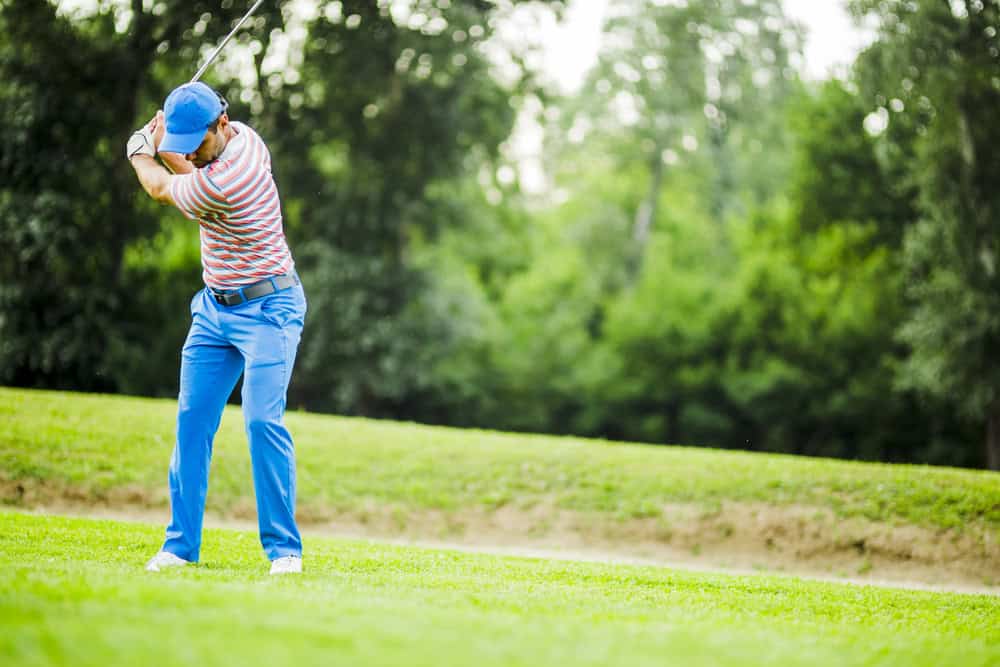
Golf is often seen as a game of precision, but power plays a significant role, too. One of the most underrated sources of power comes from your lower body. Many golfers focus primarily on the hands and arms, but the legs and hips are where the real power begins. Understanding how to use your lower body for a golf swing is the key to unlocking more distance, accuracy, and consistency in your shots. This article will break down the proper techniques to engage your lower body during your golf swing.
The Role of the Lower Body in the Golf Swing
Your lower body acts as the foundation for a stable and powerful swing. The legs and hips generate the force that drives the golf club through the ball, making them a critical part of the motion. Without proper engagement of the lower body, you risk losing power and consistency in your shots.
When properly engaged, the lower body acts as the engine of the swing. The legs provide stability, allowing for a balanced and controlled motion while the hips and core transfer that stability into speed.
How to Set Up for the Perfect Swing
To effectively use your lower body during the swing, it is essential to start with a strong setup. Begin by positioning your feet about shoulder-width apart, ensuring your weight is evenly distributed between both legs. Slightly bend your knees to create an athletic stance that allows for easy movement.
As you prepare for the backswing, focus on shifting your weight slightly to your back leg. This movement will load your lower body and set the stage for a powerful downswing. By establishing a solid foundation early on, you give yourself the best chance to engage your legs throughout the entire swing.
Engaging Your Lower Body in the Backswing
The first crucial moment when your lower body engages is during the backswing. As you rotate your upper body away from the ball, your lower body should remain stable, acting as a pivot point. Your weight should shift to the inside of your back leg, and your hips should rotate, but avoid swaying or sliding.
Think of the backswing as a loading phase, where the pressure builds in your legs. This creates potential energy that will be released during the downswing. When done correctly, your lower body will act as a spring, storing energy that is transferred into the ball.
Starting the Downswing: Power from the Ground Up
The real power of your golf swing comes from the ground. As you begin your downswing, the key is to initiate the movement with your lower body. Push off your back leg and shift your weight toward your front leg. The power generated in this phase comes from the legs pushing against the ground, transferring that energy upward into your torso and then to the clubhead.
It is important to focus on keeping your legs active during this phase. Many golfers make the mistake of relying too much on their arms, but it is the legs that create the necessary power for a high-speed swing.
Maintaining Balance and Stability Through the Impact Zone
When you reach the impact zone, the importance of your lower body becomes clear. The legs should be firmly planted, providing a stable base as you strike the ball. At this moment, your front leg should be slightly bent, and your weight should be shifted fully to your front side. The back leg should be almost straight, but not locked.
Your lower body should remain steady, and your hips should rotate naturally toward the target. This movement allows the club to strike the ball with maximum speed and control.
Common Mistakes in Lower Body Usage
While many golfers try to engage their lower body, there are a few common mistakes that can undermine the effectiveness of their swing. One of the most common mistakes is swaying, which occurs when your body shifts too much from side to side. This can cause inconsistency and loss of power.
Another mistake is over-rotating the hips, especially during the backswing. While some rotation is necessary, excessive movement can cause you to lose control and disrupt the natural sequence of the swing. It is important to stay balanced and avoid excessive movement in the lower body.
Drills to Improve Lower Body Engagement
To improve your lower body usage, it’s essential to incorporate specific drills into your practice routine. Start with exercises that promote leg strength and stability, such as squats or lunges. These exercises will help you develop the muscle control needed to maintain balance during your swing.
Additionally, practice drills that focus on the lower body’s role in the swing. One effective drill involves swinging without using your arms, focusing only on rotating your hips and engaging your legs. This will help you develop the proper timing and coordination needed to fully integrate the lower body into the swing.
Improve Your Swing at Berman Golf
At Berman Golf, we focus on helping you improve your lower body mechanics to generate more power and consistency in your golf swing. Using our specialized training methods, we help golfers of all ages understand how to use their lower body for a more efficient swing.
By focusing on biomechanics, we aim to help you gain better control, increase distance, and achieve a smoother, more powerful golf swing. If you want to elevate your game, visit us at Berman Golf to learn more about our unique approach.
Putting It All Together
Mastering how to use your lower body in a golf swing can dramatically improve your power, consistency, and accuracy. Properly engaging your legs provides the foundation for a balanced and controlled swing, making it easier to generate speed and distance. By focusing on stability, balance, and coordination, you can unlock the full potential of your golf game.
At Berman Golf, we specialize in helping golfers move more efficiently. Our approach is centered on biomechanics and building a golf swing that works with your body’s natural movement. If you are ready to take your game to the next level, we will guide you every step of the way.

Dr. Jake Berman

Latest posts by Dr. Jake Berman (see all)
- Why Is My Golf Swing So Inconsistent? Causes And Fixes - November 15, 2025
- How Far Down Should You Grip The Golf Club? A Grip Guide - November 10, 2025
- Driver Vs. Irons: Golf Swing Differences Explained - November 5, 2025

